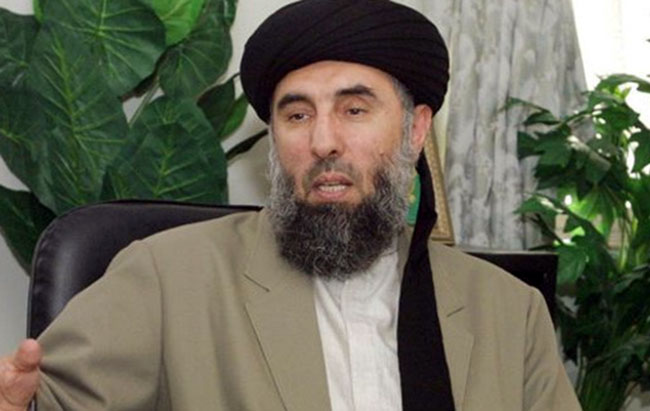With the escalated insurgency, the hope for a peaceful future declines. Afghan nation continues falling victim to terrorist attacks and suicide bombings. Life is as cheap as ever before. The peace agreement with Hezb-e-Islami Afghanistan (HIA) led by Gulbuddin Hekmatyar does not seem to alleviate violence and bloodshed. The nation has been fluctuating between hope and despair but the dream for a civil society, where the true spirit of democracy is supposed to be practiced, has been elusive. Democratic discourse is debated hotly in the media and academic atmosphere; however, the political and social challenges hamper democracy in real life.
Warring factions violate humanitarian law via killing non-combatants, including women and children and international aid workers, which will blacken the reputation of Afghanistan at international level. Of late, gunmen have reportedly killed six members of the International Committee of the Red Cross (ICRC) in Jawzjan province. Suspending some of its efforts in the country, the head of the ICRC called the incident the “worst attack against us” in 20 years, but the group said it did not know who was responsible. “We will put our operations on hold for at least a week after our colleagues were killed in the attack last night,” Thomas Glass, an aid worker and public relations officer with the ICRC is cited as saying.
Taliban spokesman Zabiullah Mujahid denied the responsibility of the attack. The governor of Jawzjan province, Lotfullah Azizi, said the aid convoy was attacked by suspected Islamic State of Iraq and the Levant (ISIL) gunmen.
Afghanistan is the Red Cross’ fourth-largest humanitarian program in the world, and the attack follows a warning by the charity last month that mounting security issues made it difficult to deliver aid across the country. Gunmen in northern Afghanistan kidnapped a Spanish ICRC employee in mid-December, releasing him nearly a month later.
ISIL fighters are considerably involved in militancy and challenge the National Unity Government (NUG) in one way or another. Within the two past years, ISIL outfits targeted the minority group on the grounds of its race and creed to stoke sectarianism and trigger tensions between Shiite and Sunni Muslims. They killed men, women and children in the worst possible way to spark off an outpouring of sensation and expected a backlash against Sunni Muslims which was, fortunately, proved abortive and no unwise reaction was shown. Hence, the ISIL fighters have, now, ushered in killing the international aid workers to challenge the NUG; this is believed to be the second project.
ISIL fighters violated humanitarian law anywhere they gained foothold, mainly in Iraq and Syria, through raping women and children, beheading ethnic minority group, shooting at civilians in foreign countries. In other words, the militant fighters seek to create horror and terror around the globe. Their ideology stems from evil and sinister nature. They neither care nor know about the rule of war and violate this rule not only through spilling the blood of non-combatants and torturing the wounded in action but also destroying the historical monuments.
The ISIL’s loyalists intend to put their radical ideology into practice in Afghanistan, wherever possible. They sow the seed of discord among the multi-ethnic nation of Afghanistan and put the reputation of the country into disrepute. Such strategies will be damaging for the country and will lead to horrible consequence if not in near but in far future. It is simply said that ‘a stitch in time saves nine’. This is a right time for the government and international community to launch a far-reaching and comprehensive campaign against terrorist networks or else they will grow stronger with each passing day.
No wonder, the security situation worsens with the process of time. A report released by a US watchdog agency says that Afghan government controls less than 60 percent of the country. “SIGAR’s analysis of the most recent data provided by US forces in Afghanistan suggests that the security situation in Afghanistan has not improved this quarter,” it said. “The numbers of the Afghan security forces are decreasing, while both casualties and the number of districts under insurgent control or influence are increasing.”
According to US military estimates, the number of Afghans living under insurgent control or influence decreased slightly in recent months to about 2.5 million people. But nearly a third of the country or 9.2 million people live in areas that are contested, according to SIGAR, leading to some of the highest civilian casualty rates the United Nations has ever recorded in Afghanistan.
The tip of the iceberg was solved with the peace agreement signed with HIA and Mullah Mansour’s successor is believed to organize heavy attacks against Afghan nation. That is to say, the insurgents will never succumb to the call of Afghan government for peace and stability. Since violence and ferocity run in the militants’ blood, their appetite for bloodshed will not decline. The public hope for democracy is waning and the NUG failed to gain the nation’s trust despite the mouth-watering agenda expressed by the heads of NUG during their presidential campaigns. The questions are that how long will the nation suffer from militancy? Isn’t it time to stop investing on the High Peace Council (HPC) and resorting to only and only military operation against all militant fighters?

